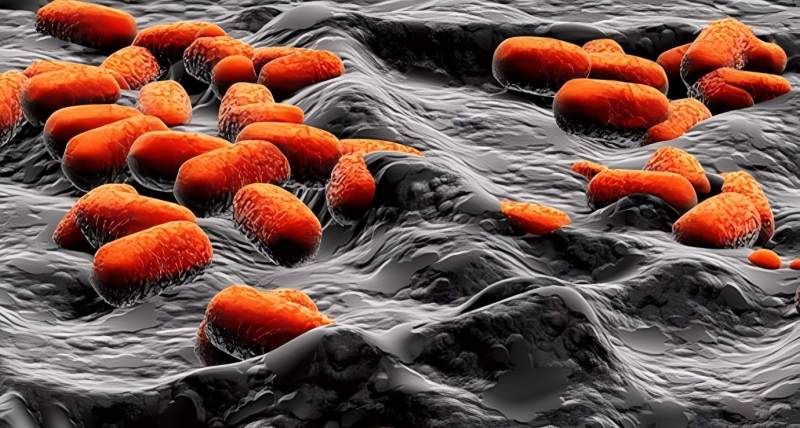Marketing Hotline:
(+86)0532-88988868
(+86)0532-88988868
An important indicator of water quality control is nitrogen content. Under the premise of the development of industrial society, the problem of water enrichment and oxidation is becoming more and more serious. Therefore, the current research focus of water treatment technology is the control and control of nitrogen pollution. Traditional wastewater treatment is generally a nitrification-denitrification denitrification process, which requires the addition of carbon sources and alkalis, which not only has high operating costs, but may also cause secondary pollution and affect the denitrification efficiency.

With the continuous progress of science and technology, researchers have gradually begun to pay attention to new biological denitrification technology, and anammox technology has emerged with its unique characteristics of high efficiency and low consumption, and has gradually been developed and applied. Based on the author's work practice, this paper analyzes and discusses the anaerobic ammonia oxidation sewage treatment technology and practical application.
1 Anaerobic ammonia oxidation reaction mechanism
According to the research of relevant scholars at home and abroad, anaerobic ammonia oxidation refers to the process of oxidizing ammonia nitrogen to nitrogen (N2) through the action of anaerobic ammonia oxidizing bacteria under anaerobic conditions, with ammonia nitrogen (NH4N) as the electron donor, nitrite nitrogen (NO2N) as the electron acceptor, and CO2 or HCO3 as the carbon source. Among them, in the process of anaerobic ammonia oxidation, intermediate products ammonia (N2H4) and hydroxyammonia (NH2OH) are also produced. In the reaction of anaerobic ammonia oxidation, only CO2 and HCO3 are consumed, and no additional carbon source is added, so it can not only effectively achieve cost savings, but also prevent secondary pollution generated in the reaction. N2O is almost not produced during the reaction process, which can effectively avoid greenhouse gas emissions caused by traditional nitrogen removal. The alkali yield during the reaction process is zero, no neutralization reagent is required, and it is more environmentally friendly.
2 The main factors affecting the oxidation of anaerobic ammonia
The growth of Anammox bacteria is relatively slow, the doubling time is 11~29 days, and the requirements for the surrounding environment are very high, and the fluctuation of the surrounding environment has a serious impact on the effect of Anammox. Therefore, how to select and control the influencing factors of Anammox is of great significance for the rapid and stable cultivation of Anammox.
2.1 Effect of temperature on anaerobic ammonia oxidation
Temperature can significantly affect the activity of Anammox, and only Anammox bacteria will show better reactivity within the appropriate temperature range, improving the operating efficiency of the reactor. When the temperature changes between 26~37°C, the nitrogen removal rate is 1.51~1.84kg/(m3•d), and when the temperature is lower than 20°C, the nitrogen removal rate of the reactor decreases rapidly to 0.55kg/(m3•d), thus inhibiting the Anammox reaction. Linear fitting showed that there was a significant linear relationship between temperature and nitrogen removal rate below 20°C.
2.2 Effect of pH on anaerobic ammonia oxidation
In the Anammox process, pH is a very important environmental parameter, which can not only directly affect the Anammox bacteria, but also indirectly affect the reactivity by affecting the availability of ammonia and nitrite, which has been shown in several studies to have an important effect on Anammox activity. pH and organic matter had significant effects on the Anammox reactor, and the optimal pH value of the Anammox reaction was 6.7~8.5 at (20±1)°C. When pH < 6.7 or >8.5, it will lead to concentrations of free ammonia (FA) and free nitrite (FNA) higher than 8.93 mg/L and 2.67×10-2 mg/L, respectively, inhibiting the Anammox reaction.
2.3 Effect of dissolved oxygen on anaerobic ammonia oxidation
Anammox is an anaerobic bacterium, so the presence of oxygen can easily affect the activity of Anammox bacteria. Maintaining an anaerobic environment in the reactor is extremely important for the Anammox reaction and cannot be ignored. By changing the alkalinity, light conditions and dissolved oxygen of the influent water, it was found that when the influent DO was less than 3mg/L, the average ammonia nitrogen removal rate and nitrous nitrogen removal rate were 99.7% and 100%, respectively, and the average total nitrogen removal load was 1.0kg/(m3•d) when the influent DO was less than 3mg/L. Dissolved oxygen inhibits anammox activity, which can be restored after dissolved oxygen is removed.
2.4 Effect of matrix concentration on anaerobic ammonia oxidation
The Anammox reaction is a biological reaction of ammonia nitrogen and nitrite, which is generally an essential substance for Anammox, as well as a limiting matrix for Anammox, and even a toxic substance. When the content of nitrite exceeds a certain limit, nitrite will inhibit anammox activity and affect normal growth and metabolism. When dealing with manual water distribution, at medium and low influent concentrations (NO2--N≤400mg/L), it is advisable to use the one-time inlet mode compared with the improved continuous inlet method. At high influent concentrations (NO2--N≥400mg/L), the improved continuous influent method has obvious advantages over the one-time inlet method.
2.5 Effect of organic matter on anaerobic ammonia oxidation
Organic matter not only promotes Anammox, but also inhibits the activity of Anammox. The promotion effect is mainly that specific organic matter can be used as energy by Anammox to maintain the physiological metabolism of Anammox, and can also adjust the carbon-nitrogen ratio to couple Anammox and denitrification. The inhibitory effect is mainly manifested in the presence of organic matter that enhances the activity of the heterogeneous bacteria, making them compete with Anammox bacteria for nitrite, the electron acceptor.
3 Application of anaerobic ammonia oxidation sewage treatment
With the deepening of the research on anaerobic ammonia oxidation technology, it has successfully realized the practical application of a variety of sewage treatment, such as municipal sludge, domestic sewage, toilet water, coking wastewater, monosodium glutamate wastewater and landfill leachate, and has gradually been popularized and used in other wastewater treatment fields.
However, at present, for some industrial fields with high ammonia nitrogen such as pharmaceuticals and aquaculture, the application of anaerobic ammonia oxidation technology for sewage treatment is still rare, which is also the direction that needs to be worked on in the future. The following are some typical practical application effects of anaerobic ammonia oxidation sewage treatment for reference.
(1) Sludge liquid wastewater treatment
The typical low-carbon nitrogen ratio sludge liquid wastewater includes sludge digestate and sludge filtrate, etc., with a temperature of 30°C~37°C and a p H value of 7.0~8.5, which is very suitable for the growth of anaerobic ammonia oxidizing bacteria. In 2002, the world's first combined nitrosation-anammox oxidation reactor was formed, and it was officially put into use at the Dokhaven Wastewater Treatment Plant. So far, the project of using anaerobic ammonia oxidation technology for sludge liquid has gradually been carried out in European countries.
(2) Landfill leachate treatment
Landfill leachate is characterized by high concentration of organic matter, high ammonia nitrogen content, large changes in water quality, and easy to contain toxic substances such as heavy metals, so it is a sewage with complex composition. The concentration of concentrated ammonia nitrogen is generally 2000mg/L, and it will become higher and higher with the increase of garbage stacking time. When some scholars studied the leachate of waste landfills, they found the phenomenon of anaerobic ammonia deficiency in the leachate, which made it possible to treat it with anaerobic ammonia oxidation technology.
(3) Urban domestic sewage treatment
With the continuous acceleration of urbanization in our country in recent years, the pressure on the urban sewage treatment industry is also increasing. In order to enhance the efficiency of sewage treatment and achieve sustainable development, it is necessary to realize the reuse of urban sewage and effectively realize the recycling of energy, which has become an important topic in the current sewage treatment research.
Municipal domestic sewage contains many energies such as organic carbon, phosphate and ammonia nitrogen, which is in line with the treatment conditions of autotrophic nitrogen removal technology, so it is expected to achieve energy self-sufficiency in sewage treatment plants. However, for cities with lower water temperatures (8°C~15°C), especially in winter, urban wastewater treatment with anaerobic ammonia oxidation process is still a big challenge.
Although relevant foreign scholars (such as Lotti, etc.) have made breakthrough research in this area, and the phased research on the pilot (4m, 19°C±1°C) has also progressed, which is expected to achieve energy self-sufficiency of sewage treatment plants, but in the process of practical technical engineering application, there are still problems such as how to improve bacterial viability under low temperature conditions and how to achieve total amplification, etc., and breakthroughs are needed in future research and development to make it better used in the treatment of urban wastewater.
(4) Livestock and poultry breeding sewage treatment
This type of sewage is characterized by high COD concentration, complex composition, large fluctuation of water quality, and the presence of certain organic nitrogen. When using traditional nitrogen removal technology for sewage treatment for livestock and poultry breeding, not only does it consume high energy, but also needs to supplement carbon sources, and the nitrogen removal effect is not ideal. The modern anaerobic ammonia oxidation process has advantages that traditional technologies do not have, and is expected to become an alternative process technology for treating this type of wastewater.
At present, in the research on the anaerobic treatment of wastewater in pig farms, there is still a problem of unstable operation, and it is necessary to further optimize the process and find countermeasures to eliminate the growth obstacles of anaerobic ammonia oxidizing bacteria in order to exert its best efficiency in the field of livestock and poultry breeding sewage treatment.
4 Conclusion
At present, the research on the operation conditions and start-up time of anaerobic ammonia oxidation projects in China is relatively insufficient, and it is necessary to further study its influencing factors in the future practice process to shorten the start-up time and realize the wide application of anaerobic ammonia oxidation sewage treatment technology.


